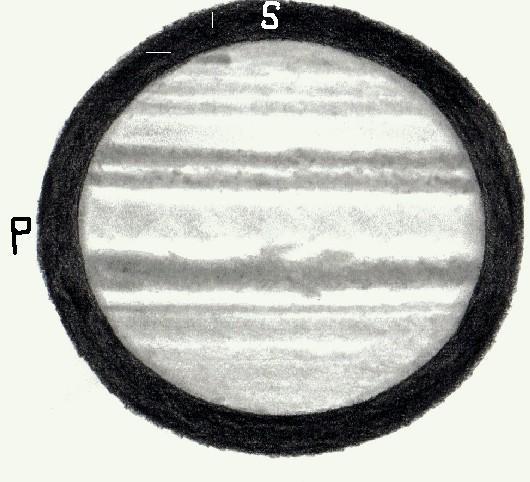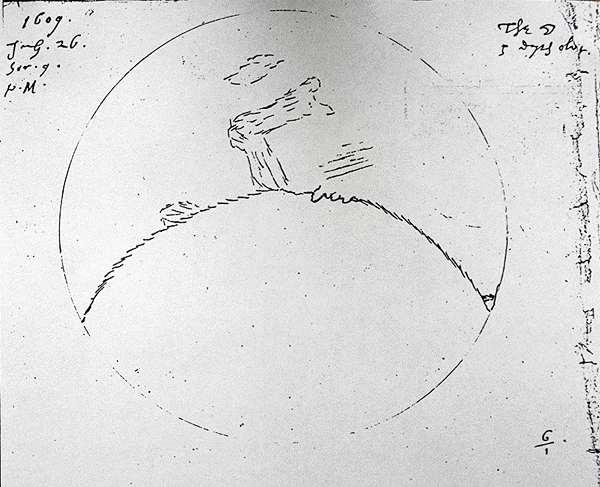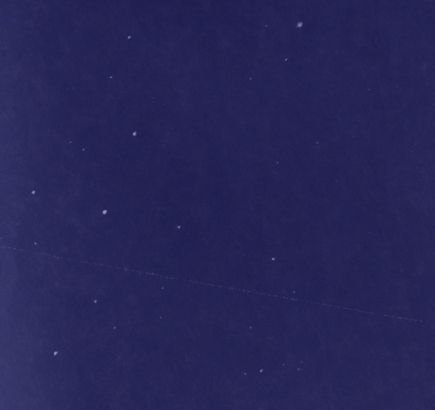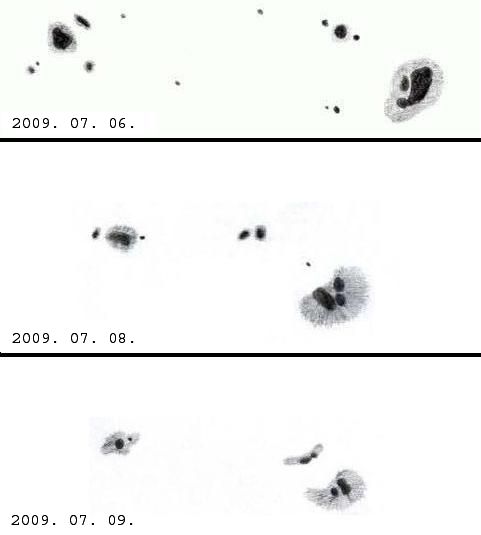
Jupiter with Wesley Comet Impact Scar
Sketch and Details by Juan Perez
OBJECT: Planet Jupiter
DATE: July 29, 2009
TIME: 1:30 LST / 8:30 UT
LOCATION: Harquahala mtns, near Aguila Arizona USA
INSTRUMENT: Celestron CPC1100 w/ 40,32,25 and 10mm Plossl’s
DETECTOR: Visual sketch
MAGNITUDE: -2.8
WEATHER: Clear sky, moderate winds, temp. 95deg F
COMMENTS:
After the monsoon season, We’ve had some very cooperative days or nights in the sense of clear and dark skies for those of us here in Arizona. Of course most of you know, the
impact scar first found on Jupiter by the Australian amateur astronomer has now been seen by virtually everyone interested in this field or hobby. I finally got a chance to haul my
CPC 1100 to a dark and remote site in the Harquahala mountains.
At sunset, I began to set up but had to wait and give Jupiter a chance to rise higher from the horizon and to lessen the effects that turbulent hot air has on the seeing.
Patience and counting Aquarids helped me kill a few hours while allowing Jupiter to rotate and start showing its scar. My attempt at searching took several tries since I could not detect the tiny blotch or dark patch on the Southern Polar Region. Once it came into view, I waited for it to position itself in front of the planetary disk.(about 1:30 am LST)
The scar is easily detectable with the CPC 1100, I used various Plossl’s interchangeably to get different views and details. Tha scar has taken and elongated appearrance and seems to be in the vicinity of 5 or 6 arcseconds in length. North from the impact site is a noticeable white round storm very small in comparison to the scar.Two and a half or so hours later, the scar
rotated out of view and the show was over but, the visual experience and excitement will last for many days. I hope the impact scar can linger for many more days too so that more people can have a chance to look and enjoy this -out of this world- phenomenon.
By the way, I counted over 60 Aquarids in the span of about 5 hours !! “juanchin”









